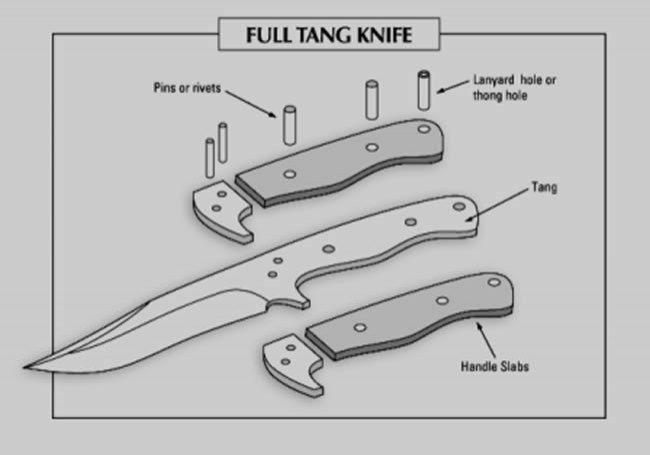When it comes to knife design and functionality, one of the most important structural elements is the tang — the part of the blade that extends into the handle.
1. What Is a Full Tang Knife?
A full tang knife has a blade that extends the full length of the handle. The tang and the blade are one continuous piece of metal, and the handle scales (grip materials) are attached on either side of the tang.You can usually see the metal tang sandwiched between the two handle pieces when looking at the side of the knife.
2. Advantages of Full Tang Construction
- Strength: Full tang knives are extremely strong because they are made from one solid piece of steel.
- Power Transfer: Force applied to the handle is directly transferred to the blade.
- Balance: The added steel in the handle improves overall weight distribution.
- Durability & Safety: Less likely to break or come loose under heavy use. Great for survival, bushcraft, or hunting tasks.
3. Full Tang vs Hidden Tang
- Full Tang: Ideal for tough use. Visible steel along the sides of the handle.
- Hidden Tang: The tang is thinner and enclosed within the handle. Often used for aesthetic or lightweight designs, like chef or collector knives.
4. Is It Hard to Make a Full Tang Knife?
Full tang knives require more steel and precise grinding to match the handle materials. But the added strength and performance make it worth the extra effort.
🛠️ Conclusion
Full tang knives are the go-to choice for serious users who need reliability, strength, and balance. Whether you're crafting blades or choosing your next knife, understanding the tang type is key to making the right decision.If you're into making or collecting knives, a well-crafted full tang blade is always a solid investment!

